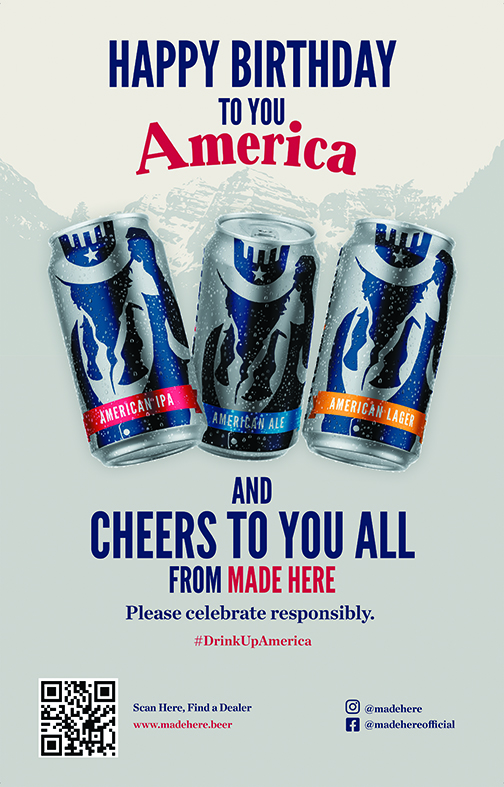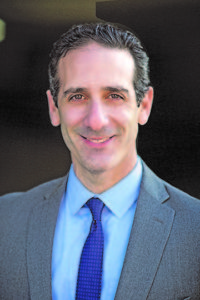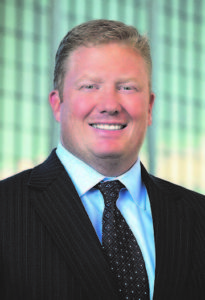


Made Here

Clowns To The Left Of Us, Jokers To The Right.
Here We Are Stuck In The Middle
by Danny Foster and Bob Graham
Imagine, if you will, living in a time when you cannot express your political opinions, or any opinion for that matter, without being attacked, canceled, or dismissed. Imagine a time when loud demagogues control the Democratic Party and the Republican Party, and if you don’t walk in lockstep with the “leaders” of the Party, then you will be marginalized and called a racist or a socialist or an insurrectionist. Well imagine it no longer, this is America 2021, and pragmatism and thoughtful dialogue have left the building. We are all reaping what we have sowed by allowing the loudest voices to control our public discourse and policy. As much as we would like to blame the screeching voices on the Left, or the tin-foil hats on the Right, it is us, the majority of adults in this country, who are to blame. We are guilty of not standing up to the demagogues in the Democratic and Republican parties.
The demagogues on the Left are no different than the demagogues on the Right. Sure, they have different political ideas, but their tactics are essentially the same. Viciously attack those whose opinions are different and embrace tribalism in its most visceral form. Nothing says “anti-fascist” like throwing bricks at your political opponents. There is great danger in assuming one’s side of an argument is free from fallibility or not otherwise open to question. We can only learn from each other if we are able to exchange ideas openly — without being shouted down by those with whom we disagree (after all we were both politically polarized, but through thoughtful discussion we have brought each other to the Center). When Rep. Ilan Omar and the rest of the Squad have become the loudest voices in the Democratic Party, and Reps. Lauren Boebert and Marjorie Taylor-Greene have become the loudest voices in the Republican Party, it leaves a wide gulf of unrepresented opinions in the middle. And on behalf of the Silenced Majority, let us just say that both Parties are collectively bumming out a large percentage of this country and we must stop being silent.
Common sense and maturity have long since abandoned the Parties and created a seemingly binary world. But it doesn’t have to be that way. A recent Gallup poll indicated that 40% of Americans consider themselves politically independent, the highest percentage ever recorded, while those holding themselves out as Democrats or Republicans has dramatically dropped in the past few years. That is because the majority of Americans are fed up with the extreme positions and tribalism sweeping our city councils, state legislatures, and the U.S. Congress. But unless the political mod-erates on both sides start exerting more political muscle and shutting down the polarizing rhetoric, the extremists will win. And we cannot let that happen.
We must refuse to let the fringes of these parties control our political dialogue. We should not be cowed into silence because we believe we will be attacked. If you are a Democrat, you shouldn’t be scared to say that you respect the police and that the De-fund the Police Movement is a terrible idea. Supporting our police doesn’t make you a bad Democrat, it makes you a grown-up. If you are a Republican, you shouldn’t be scared to say you are in favor of reasonable gun restrictions. That doesn’t make you a bad Republican, it makes you a good citizen. After all, 62% of all Americans favor a ban on semi-automatic weapons.
What can you do? Don’t be afraid to state your opinion, even if your opinion is not the politically expedient one, and listen respectfully to those with whom you disagree. For example, when we see a tent city pop up in our neighborhood, we must treat the occupants of that tent city compassionately, but we also must strongly advocate for its immediate removal. And we shouldn’t feel guilty about saying this because tent cities are inhumane, dangerous, and the quickest way to decimate property values. Denver doesn’t want to be another San Francisco, Seattle, or Portland. Sure there are several local politicians on the Denver City Council who embrace homeless encampments to score political points, but at what cost? Don’t forget that over 80% of the voters in Denver voted to maintain the camping ban, not end it. So why are we all afraid to say it? Because so many are scared to be labeled insensitive, or even racist. If simply defending reasonable positions marks you as a bigot, then civic discourse becomes impossible and there is no way to compromise. You are entitled to your opinion and the Silenced Majority supports you.
We have enormous respect for Republican Congresswoman Liz Cheney and Democratic Senator Joe Manchin who have demonstrated true profiles in courage. Rep. Cheney had the guts to call out Donald Trump’s lie about the election being stolen even though it would have been much easier for her to toe the Republican line and Sen. Manchin has the guts to oppose extreme positions in the Democratic Party which has put him at odds with the Progressive wing of his Party.
Disagreements become insults when politics becomes a statement about who you are as a person. The children have been driving the bus long enough and they are steering us into on-coming traffic. It is time for the Silenced Majority to say Enough is Enough and take the wheel. (We’re sorry if this editorial “triggered” you, grow up.)
Danny Foster and Bob Graham have been law partners in Denver since 2000; danny@fostergraham.com, bob@fostergraham.com.

A simple guide to finding the best grill for you
(BPT) – The sound of the sizzle, the smell of foods cooking outdoors, the undeniable taste – it’s time to get back to the barbecue. For many people, a grill becomes a second kitchen. For others, it’s their primary way of cooking all year long.
“We need it more than ever after a year like this,” says Steven Raichlen, grilling authority, author and host of television’s “Project Fire.” “Grilling brings joy. Unleashing your inner pyromaniac is fun. Building a fire is fun. Waltzing the food from hot spots to cool spots is fun. Grilling is an interactive sport. Every grill session is different and that alone makes it joyful.”
More than just cooking good food, Raichlen says grilling is a bonding activity that focuses on a simple pleasure that everyone enjoys.
“It’s fun and uncanny how grilling brings people together. No one gathers around the stove to watch a pot of stew simmer. Light your grill, people congregate and you, the grill master, become master of ceremonies,” he says.
The appeal of grilling transcends generations, and many people are now shopping for new grills so they can enjoy cooking outdoors. The problem is there are many types of grills, different sizes and varying price points, so it’s difficult to know which is right for your needs.
Saturday, May 29, is National Back to Barbecue Day, one of the busiest shopping days of the year for new grills. For a grill buying guide, visit BBQ Outlets at www.bbqoutlets.com/grill-buying-guides. If you are looking to buy a new grill, the experts at the Hearth, Patio & Barbecue Association share some important things to keep in mind:
Types of grills to consider
Gas: For people who want convenience. Just like your kitchen stove, it can be ready to cook in 10 minutes, and it’s easy to regulate cooking temps.
Charcoal: For those who love being hands-on with the nuances of outdoor grilling. Some say charcoal provides the best flavor experience. Good for low and slow cooking and high heat searing.
Pellet: For people who want the most in flavor. Wood pellet grills are among the most energy efficient and burn clean. Pellets come in varieties such as hickory, mesquite and oak, providing a truly flavorful cooking experience.
Electric: For people who love simplicity. Electric grills are designed to produce constant heat and operate without an open flame. Ideal for apartment or condo dwellers since they don’t require charcoal or propane.
Kamado: For people who love cooking all styles and seasons. Kamado grills’ excellent insulation is ideal for both grilling and smoking. They can use wood and charcoal and are ideal for roasting and baking.
Questions to ask before buying a grill
What do you love to cook? Many grills come with extra features ideal for certain foods, like rotisseries if you love a roasted chicken, side burners if you love soups and stews, or ample space for pizza stones if you frequently crave the ‘za.
How much time will you have to cook? If you’re hard pressed for free cooking time, consider the convenience of gas or electric grills. Love to pass the time cooking? A charcoal, smoker or kamado grill may be best for you.
How much space do you have? If you have a big backyard, consider a larger grill perhaps with a kitchen island to create a focal point for relaxation and entertaining. Premium portable or more compact grills are ideal for condos and apartments.
Once you have your grill at home and ready to go, it’s time to get cooking. Raichlen shares one of his favorite grill recipes below. Find more recipes, cooking tips and pledge to grill out at www.whyigrill.org.
Pamplona of Pork
Ingredients2 pork tenderloins, each 1 to 1-1/4 poundsCoarse salt – sea or kosher – and freshly ground black pepper3 tablespoons Dijon mustard1 roasted red bell pepper, stemmed, peeled, seeded and sliced into 1/4-inch strips (see note below)3 ounces thinly sliced smoked ham, sliveredOne 5.2-ounce package Boursin cheese or other soft garlic and herb cheese, crumbled4 strips thin-cut baconVegetable oil for oiling the grateYou’ll also need: Butcher’s string; 1 or 2 hardwood chunks or 1-1/2 cups hardwood smoking chips. If using the latter, soak in water to cover for 30 minutes, then drain. Directions1. Set up your grill for indirect grilling and heat to medium-high, about 400 degrees.2. Meanwhile, cut a deep pocket in the side of each pork tenderloin. Season the inside of the pocket with salt and pepper and paint with mustard. Stuff the peppers, ham and cheese into the pocket. Season the outside of the tenderloins with salt and pepper.3. Lay four 10-inch pieces of kitchen string on and parallel to your work surface. Lay a strip of bacon on and perpendicular to the strings. Top with one of the tenderloins. Lay a second strip of bacon on top of the tenderloin. Bring up the ends of the strings and tie. Trim the ends close to the knots. Repeat with the remaining tenderloin.4. Brush or scrape the grill grate clean and oil it well with vegetable oil. If using a charcoal grill, add the wood chunks or chips to the coals. On a gas grill, place in the smoker box or under the grate directly over the burners.5. Indirectly grill the tenderloins until nicely browned and the meat is cooked through to 145-155 degrees or as needed, about 40 minutes.6. Let the meat rest for 5 minutes. Remove the strings, then, using a sharp knife, preferably with a serrated blade, slice the tenderloin crosswise into 1/2-inch medallions. Transfer to a platter or plates.Note: The pepper can be prepared at a previous grill session. Heat the grill to high then roast the pepper until the skin is blackened and charred, 2 to 3 minutes per side. Alternatively, roast the pepper over an open flame on your gas stove or the side burner of your grill. Cover and refrigerate for up to a day if not using immediately.
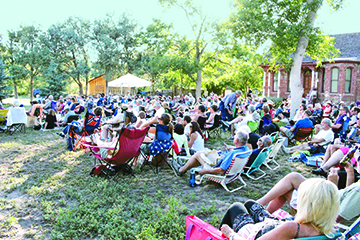
Live Events Reopening As Denver, State Says Goodbye To Capacity Limits
Fan Appetite For Live, In The Flesh Performances Have Valley Venues, Events Big And Small Quickly Reemerging
by Glen Richardson
 When Denver and the state said goodbye to capacity limits and distancing requirements last month, artists, industry professionals, and anxious fans quickly started turning the page. The decision — the most momentous yet since the pandemic hit — has live gigs returning to outdoor/indoor culture and music venues large and small. Moreover, theatre and concert dates that were canceled in 2020 are being flipped to 2021.
When Denver and the state said goodbye to capacity limits and distancing requirements last month, artists, industry professionals, and anxious fans quickly started turning the page. The decision — the most momentous yet since the pandemic hit — has live gigs returning to outdoor/indoor culture and music venues large and small. Moreover, theatre and concert dates that were canceled in 2020 are being flipped to 2021.
There are, of course, still parameters: Indoor events of more than 500 people still must get approval. Outdoor seated and ticketed events in spaces 30,000-sq.-ft. or greater must also get approval to increase their capacity.
The biggest pay off as live performances commence again is to see the joy actors and musicians feel getting back in theatres and concert halls. It’s equally exciting to see the audience reaction as they finally get to attend and witness live shows again. After a year-plus of shutdowns, the opening-up of capacity limits contains seeds of optimism for a bright summer of entertainment. Setbacks, of course, are still possible. Even if everything goes well, it will likely be next year before the live experience gets fully back to normal.
Here’s what’s been announced in the early days since capacity limits and distancing requirements were nixed by the city and state officials:
Theatre

Creek’s Act Is Back: After 500 days without a live performance, Cherry Creek Theatre is reopening with Tenderly Aug. 6-29. Susie Snodgrass is shown in photo welcoming patrons to the last live show in Jan.-Feb. 2020.
Cherry Creek Theatre — After more than 500 days without a live performance, Cherry Creek Theatre is reopening in the 400-seat Elaine Wolf Theatre in the JCC Community Center. Tenderly, the Rosemary Clooney musical, is the company’s 11th season opener Aug. 6-29. Told through her signature songs, the two-person musical takes audiences beyond the public persona limelight with an intimate look at her personal life from the Appalachian roots to Hollywood stardom. Cherry Creek Theatre’s previously announced titles, Steel Magnolias and Jest a Second run in the Wolf Oct. 1-24 and Oct. 29-Nov. 21. Information: 303-316-6360.
Buell Theatre — When Covid hit last year the Denver Center for the Performing Arts (DCPA) canceled or postponed all of its theatrical productions, including locally produced and touring Broadway shows. Prior to the latest announcement, DCPA had disclosed the resumption of indoor, in-person productions starting with Disney’s The Lion King, Dec. 2-Jan. 2. The Tony winning show is known as much for its music and moving story as it is for its artful costumes, puppetry and choreography. Hamilton is set to follow The Lion King Feb. 22-March 27, 2022. My Fair Lady, 1776, Mean Girls, and Ain’t Too Proud initially announced for this fall were postponed until 2022. With restrictions being lifted in other major cities, it is conceivable, but doubtful, that one or more shows could be brought back this fall. Information: 720-865-4220.
Arvada Center — As lights come up and the curtain rises again, the Arvada Center is opening the 2021 season with I Do! I Do!, Sept. 10-Oct. 10. The two-person musical is a touching story that follows the sweet and sour moments of 50 years of love and marriage. Information: 720-898-7200.
Outdoor Concerts

Live Concerts Return: Swallow Hill Music is bringing the Shady Grove Picnic Series back to Four Mile Historic Park on Thursday evenings June 3 through Aug. 26, 6:30 p.m. Hal Aqua & The Lost Tribe kick off the series on June 3.5
Shady Grove Picnic Series — Shuttered last summer, Swallow Hill Music has announced it is bringing the Shady Grove Picnic Series back to Four Mile Historic Park on Thursday evenings starting June 3 and ongoing through Aug. 26, 6:30 p.m. Hal Aqua & The Lost Tribe kick off the series on June 3, followed by Dakota Blonde on June 10. Cary Morin & Ghost Dog entertain on June 17, followed by Extra Gold June 24. Information: 303-777-1003.
DCPA Galleria & Sculpture Park — A series of open-air, outdoor cabaret concerts are coming to the Galleria and Sculpture Park beginning with an Evening of Jazz with Sheryl McCallum June 5 at 3 p.m. and again at 5:30 p.m. The Colorado Symphony follows with a series of outdoor chamber music concerts under the glass in the complex, June 17-20, 6 p.m. Information: 720-865-4220.
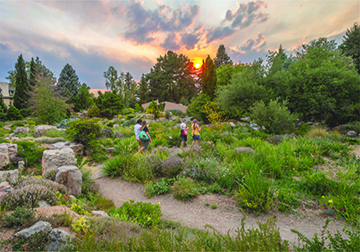
Music In The Gardens: Evenings al Fresco is returning to the Denver Botanic Gardens on select Mon.-Wed. June 7-Aug. 4, 4:30-8:30 p.m. Attendees can stroll the grounds during the event. Photo: Scott Dressel-Martin
Denver Botanic Gardens — The Garden’s Summer Concert Series was canceled earlier this year. Produced in partnership with Swallow Hill Music, some shows may possibly return. Swallow Hill and York Street, however, are bringing back Evenings al Fresco on select Mon.-Weds. from June 7 to Aug. 4, 4:30-8:30 p.m. The season opens with Matt Skellenger and his jazz group. Information: 720-865-3500.
City Park Jazz — The nine free Sunday concerts at Denver’s City Park Pavilion are returning June 13-Aug. 8, 6-8 p.m. except the Brass Band Extravaganza June 20, 5-8 p.m. Highlight event is a Denver Jazz Heritage Celebration featuring the El Chapultepec All Stars, July 25. The event is also celebrating the life of Denver jazz legend Freddy Rodriguez Sr. who died of Covid. His son, Freddy Jr., will play at the show.
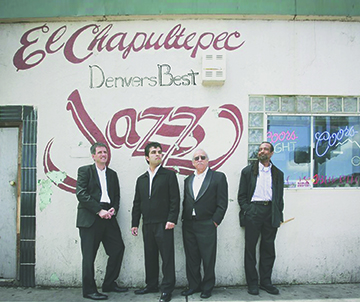
Jive In The Park: The nine day free Jazz in City Park concerts return June 13-Aug. 8. Highpoint is the Denver Jazz Heritage Celebration featuring the El Chapultepec All Stars (pictured) on July 25.
Red Rocks Amphitheatre — The storied U.S. venue sat empty most of last year, but is likely to lead Denver’s live music comeback with rapid additions of shows. It had already opened to 2,500 people per show in March. Top upcoming shows include Big Head Todd & the Monsters June 12-13 and Chicago on June 17. Two Days of Reggae on the Rocks returns Aug. 21-22. Information: 720-865-2494;
Levitt Pavilion — The Ruby Hill Park venue kicked off the season in May announcing 10 free concerts through Sept. 18. With capacity lifted, however, look for the site to add paid concerts as early as July 4. Information: 303-578-0488.
Indoor Concerts

She’s Got Rhythm: Heidi Schmidt sings with the Colorado Jazz Repertory Orchestra performing at the Lakewood Culture Center June 6. Photo: Elijah Patchen
Swallow Hill Music — Swallow Hill has announced it is launching eight concerts in Daniels Hall. Performances begin with Tony Trischka on Sept. 10, Carrie Newcomer Sept. 11, followed by the Sons of the Pioneers on Sept. 25. Announcement of added shows likely will come quickly. Information: 303-777-1003.
Mission Ballroom — Like other indoor venues, the Ballroom has been booking events for months. But expect capacity crowds in the 4,000 seat building on July 4 when Zeds Dead has been booked, followed by Primus on stage July 30. Information: 720-577-6884.
Lakewood Culture Center — Look for in-person crowds of blues-jazz lovers to fill the theatre as the Colorado Jazz Repertory Orchestra is booked to perform the best of Count Basie and other renowned jazz artists June 6, 2 p.m. Information: 303-987-7845.
Arapaho Philharmonic — Proof there’s light at the end of the tunnel for live performances, the Philharmonic plays American Masters Old & New at the First Church of the Nazarene on E. Hampden Ave. June 11, 7:30 p.m. The evening of music pairs Aaron Copland’s Appalachian Spring Suite with works by modern composers. Information: 303-781-1802.

